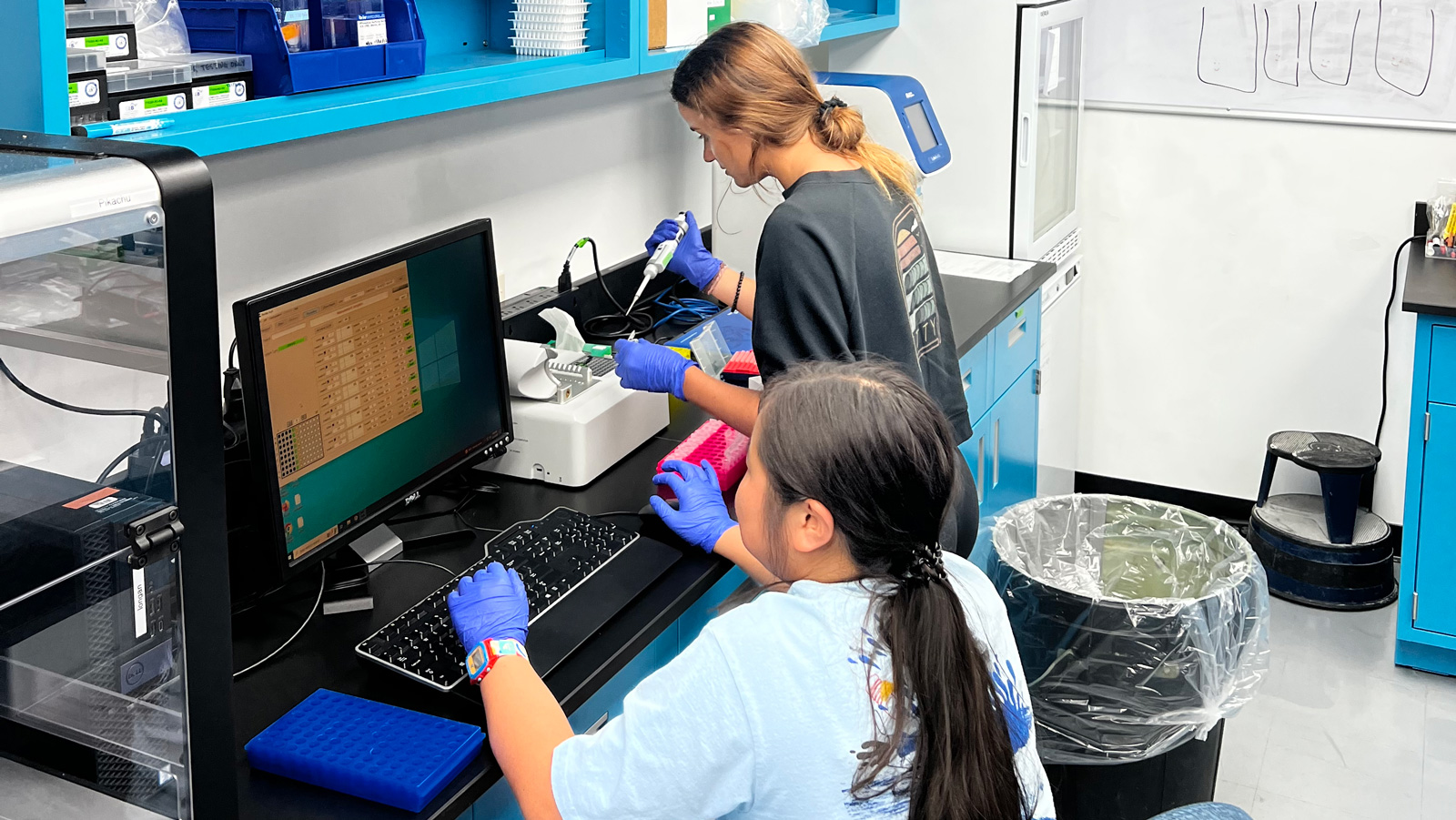Only a few weeks into summer, Coral Program Interns Lorelei Ing, Taylor Gill, Zachary Zagon and Kenzie Cooke have been hard at work as they process coral samples and perform DNA extractions in preparation for ‘Omics analyses that will help to better understand how the genetic structure of corals influences their resilience to environmental stressors. The Coral Program falls within the Ocean Chemistry and Ecosystems Division (OCED) at NOAA’s Atlantic Oceanographic and Meteorological Laboratory (AOML).
Ing and Gill are working on samples from the Urban Coral Population Genetics study led by Michael Studivan, Ph.D. while Zagon and Cooke work on samples from Ana Palacio’s, Ph.D. experiment looking at nutrient effects and other environmental stressors on disease transmission among coral species. Both Studivan and Palacio are scientists at NOAA’s Cooperative Institute for Marine and Atmospheric Studies (CIMAS) located at the Rosenstiel School of Marine, Atmospheric, and Earth Science, working jointly with the Coral Program at AOML.
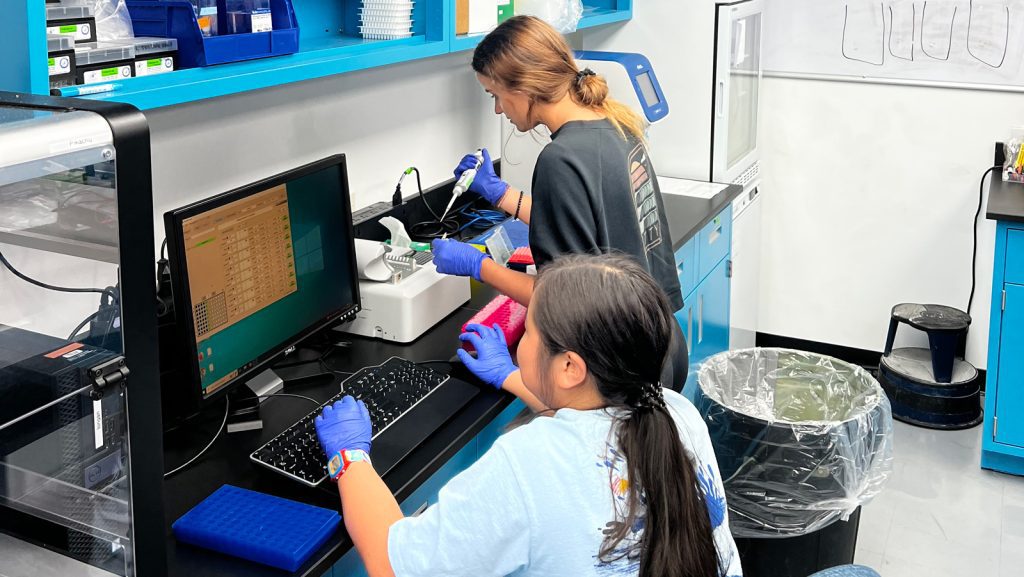
Studivan’s, Ph.D. Research on Urban Coral Population Genetics
The ultimate goal of Studivan’s research is to analyze the genetic structure of coral populations in urbanized, inshore reefs compared with offshore reefs to understand the role that urbanized corals may play in the persistence of heavily degraded offshore reefs. If urban corals are determined to be more resilient to environmental stressors than corals found offshore, understanding the genetic structure of urbanized corals could play an integral role in enhancing the resilience of offshore coral reefs. Environmental stressors refers to any conditions such as elevated ocean temperatures, nutrient enrichment, and disease that have an adverse impact on coral reefs.
Lorelei Ing is an Ernest F. Hollings Scholar completing her internship at AOML over the summer, and Taylor Gill is the current Coral Program Intern through CIMAS. While the two of them work within the scope of Studivan’s research, they have both developed their own independent projects. Ing is looking into the algal symbiont characterization of urbanized, inshore and offshore corals to better understand differences among coral populations and potential stress resilience. Algal symbiont here refers to the eukaryotic organism found within a coral’s tissue that produces nutrients the coral needs via photosynthesis in turn for shelter, creating a mutually beneficial, or symbiotic, relationship. Beyond her work at AOML, Ing is working towards her Bachelors of Art in Biological Sciences and Classical Studies at Smith College. Gill’s project focuses on assessing larval recruitment of urban coral habitats in the Port of Miami through in-situ fluorescence imaging.
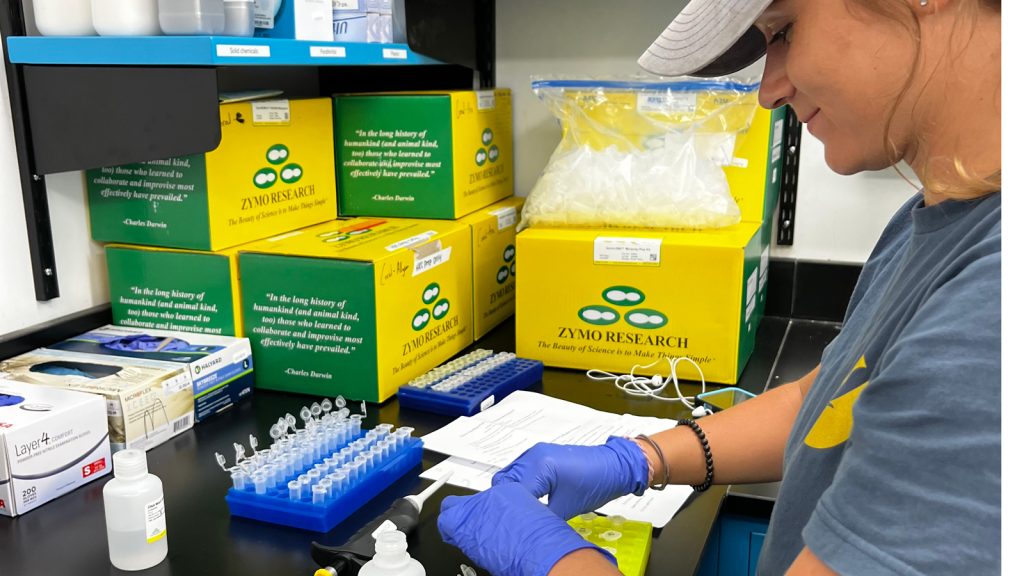
Palacio, Ph.D. Focuses on Stony Coral Tissue Loss Disease and Environmental Co-Stressors
Palacio’s research, with the help of interns Zagon and Cooke, seeks to identify environmental co-stressors of stony coral tissue loss disease (SCTLD), specifically seasonal temperatures and nutrient enrichment common in nearshore Florida reef habitats. Ultimately, this project will contribute to understanding why SCTLD has been able to persist for the last nine years and counting.
Zagon is a current student at the University of Miami’s Rosenstiel School for Marine, Atmospheric and Earth Science earning his Masters of Professional Science (MPS) in Tropical Marine Ecology. Similar to Ing and Gill, he has designed a project to assess algal symbiont characterization of corals from Palacio’s experiment and determine whether multiple stressors impact coral and algal associations as well as disease susceptibility. While an intern, Zagon has oriented this hands-on experience to complete his MPS degree at the University of Miami. With the culmination of his research project under Dr. Palacio’s guidance, he intends to graduate by early August.
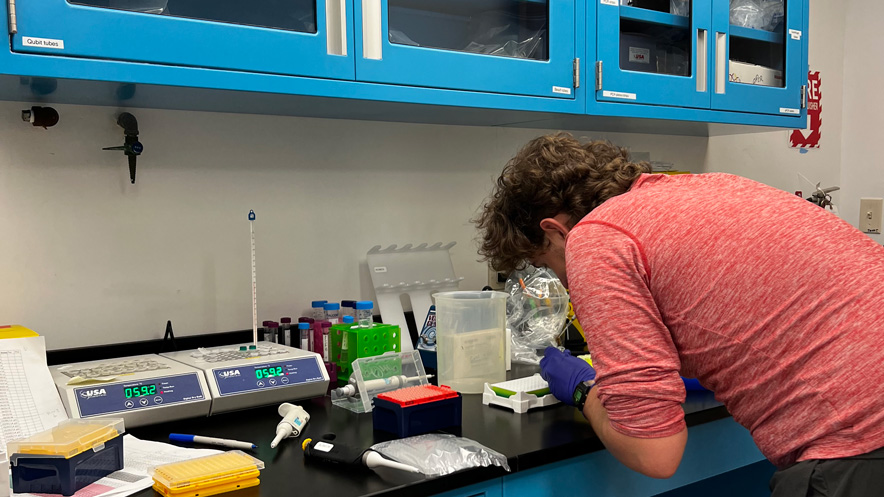
Kenzie Cooke has also been working diligently with Dr. Palacio as an Undergraduate Student Assistant working through CIMAS. Cooke assists the Coral Program at AOML in experiments and related water chemistry analysis, as well as helping with current and future design and manufacturing needs. She is currently earning a B.S. in Marine Biology and Ecology at the University of Miami.
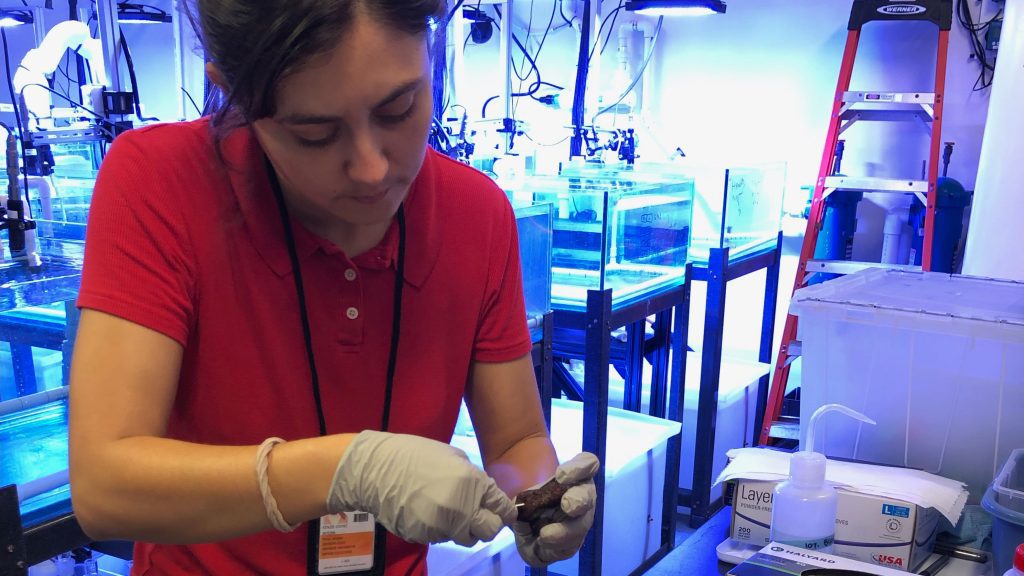
Performing DNA Extractions on Coral Samples
To process coral samples for DNA extractions, the interns must preserve coral tissue in Zymoshield, a reagent that maintains the genetic makeup of the sample. This allows it to remain stable in ambient conditions. Prior to extractions, tiny beads are added to the coral samples. These samples are then put into a device called a FastPrep, which vibrate the beaded tubes and break down the coral tissue.
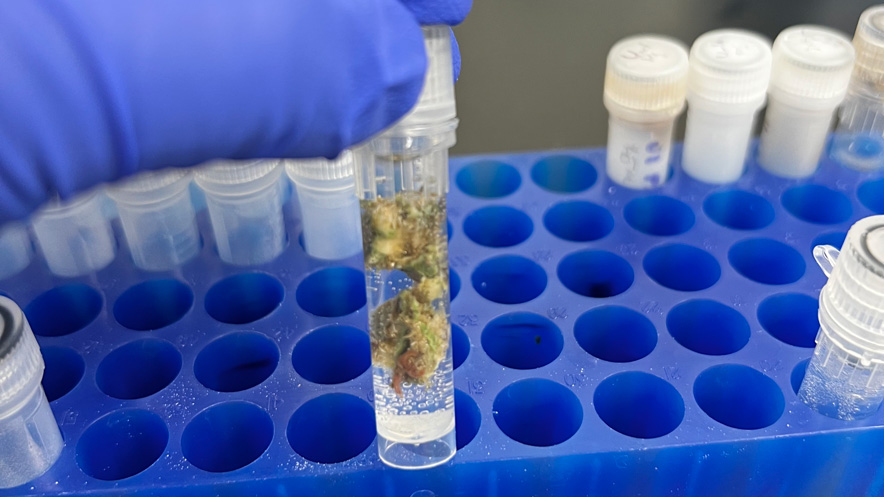
This protocol allows scientists to purify the DNA and use it for reactions such as qPCR (quantitative Polymerase Chain Reaction). The interns quantify the purity and concentration of the extracted coral DNA samples using a device known as the NanoDrop, which is used to ensure that the samples can be used in qPCR. Once this is completed, the coral samples are then set up on a qPCR plate to prepare for the reaction. The qPCR amplifies bits of coral DNA, and in this case, specifically identifies the clades of algal symbionts among the coral samples.
The research performed by these interns will play a key role in the ongoing projects at NOAA Atlantic and Oceanographic Laboratory’s (AOML) Coral Program and CIMAS to advance existing knowledge on coral resilience to diseases such as SCTLD and other environmental stressors while contributing to existing ‘Omics Data. ‘Omics broadly refers to data obtained from analysis of coral DNA, RNA and any other source of environmental DNA (eDNA). Advancing coral resilience and restoration efforts is only achievable with the dedication these interns exemplify on a daily basis.
